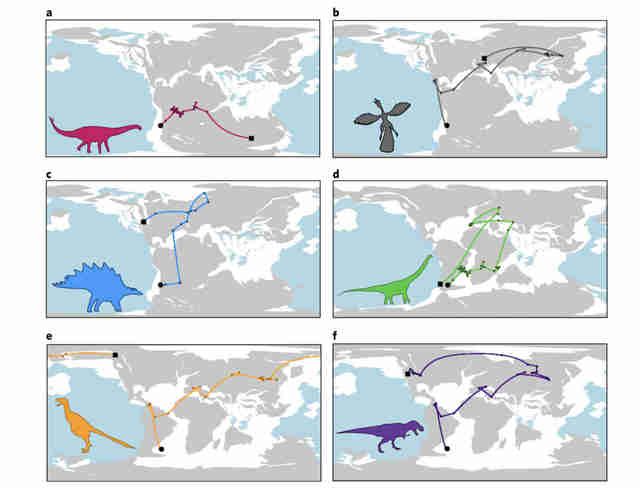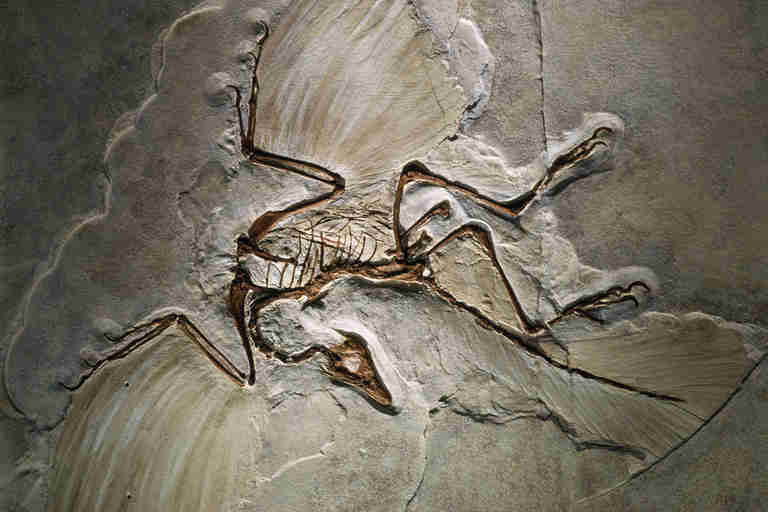 |
| The hummingbird Aglaeactis cupripennis, common name Shining Sunbeam |
Hummingbirds are maneuverability specialists, so researchers studying the basic science underlying agility went to where there are a lot of these agile avians: sites in remote parts of the Peruvian Amazon, Costa Rica, and the Ecuadorian Andes.
"Our first field site was at a biological reserve deep in the Peruvian Amazon, an area with many species of hummingbirds, but only accessible by boat," researcher Paolo Segre told Seeker.
"We ran our computers and cameras using solar panels and generators in a thatched hut with strategically placed rain buckets," added Segre, who was formerly with the University of British Columbia, but is now at Stanford University. "It was fun, but exhausting, and we had to deal with venomous snakes, curious monkeys, less-than-ideal conditions for our electronics, and a tricky geopolitical situation due to an illegal gold rush."
The challenging work paid off, however, as Segre and his team determined that evolved differences in muscle power and wing size govern agility in flight. The findings, published in the journal Science, have implications for everything from airplane design to therapies for people suffering from motor-sensory disorders. The latter is because the scientists developed a new way to quantify complex behaviors, be they birds zipping toward a feeder or a person talking.
 |
| Los Amigos Biological Station in Peru, one of the sites where researchers analyzed the agility of hummingbirds |
For the study, Segre and his team managed to capture over 200 individual hummingbirds from 25 different species at the various sites using fine mesh mist-nets. Once captured, each bird was placed in a contained space and allowed to move freely. As the hummingbirds zipped around, the researchers filmed them and employed a tracking system, recording over 330,000 maneuvers in total.
The movements were analyzed with precision utilizing computer vision technology developed by co-author Andrew Straw at the University of Freiburg in Germany. The method was so precise that the scientists could even identify each particular hummingbird species just by observing its maneuvering patterns alone. Once studied, each bird was released back into the wild.
And, as Segre said, the conditions made this technical work difficult.
"One of the challenges of this study was miniaturizing the tracking system and optimizing it for travel and tropical conditions," he said. "Once we finally got it working, we still had to deal with some interesting situations.
"At one point," he continued, "our improvised lab in Peru was swarmed by army ants. This is a colony of voracious, biting, and stinging ants that form a wide carpet and attack anything in their path. At that point we had to shut the system down, leave the room, and wait for two days for the ants to move on."
With the ants and other obstacles out of the way, the scientists were very surprised to see that the heftiest hummingbirds outmaneuvered all of the other birds.
"That's because previous studies of bats, birds, and other animals have shown that within a species, increases in body mass can have a detrimental effect on many aspects of flight," co-lead author Roslyn Dakin of the University of British Columbia department of zoology told Seeker.
"Our results explain why larger hummingbird species can outmaneuver smaller ones," she continued. "It's because of the correlated evolution of other traits that can compensate for their increased body mass."
These other traits largely concern their wings and muscles. Muscle capacity, or the ability to quickly lift maximum weight, was important for fast acceleration maneuvers. Fast rotations and sharp turns, on the other hand, relied more upon wing loading, which is the ratio of body mass to wing area.
"Thus, a bird can have lower wing loading either by having larger wings or lower body mass," senior author Douglas Altshuler, also from the University of British Columbia, told Seeker.
 |
| The multi-camera hummingbird tracking system |
Another unexpected finding was that high and low elevation hummingbirds perform similarly. In a previous study, Dakin and her colleagues took a predominantly low-elevation species, the Anna's hummingbird, and moved it to a high elevation. They found that the transplanted birds were not able to accelerate, de-accelerate, or to turn as quickly because of the altitude.
For the new study, they tested species that naturally live at high and low elevations — "on their home field, so to speak," she said.
The high-elevation species in this case were, by most measures, just as agile as the low-elevation birds, suggesting that they can compensate for the effects of altitude on some aspects of maneuvering flight.
"The exception was the complex turns," she said. "Low-elevation species will turn on a dime more often, suggesting that there is at least one constraint of altitude that high-elevation species haven't overcome."
A unique aspect of the study — aside from the remarkable number of studied hummingbirds — is that it employed a geometrical framework to extract individual features from complex movements, which in this case included different types of rotations, turns, and "translations."
Dakin explained that translations included maneuvers when the birds accelerated or de-accelerated their forward speed while maintaining a fairly consistent altitude.
The observed rotations and turns were equally impressive. Some hummingbirds, for example, executed pitch-roll turns. For these moves, the birds would slow down, raise their body orientation toward vertical, rotate, and then accelerate again in a new direction.
"They use their agility for mating displays, competition, catching prey, and escaping predators," Altshuler said. "Some of these behaviors are important for small animals, and some of this is probably a by-product of their hovering ability."
 |
| Heliodoxa aurescens, commonly known as Gould's Jewelfront |
As admirers of hummingbirds know, the birds appear to be incredibly intelligent and social creatures. The researchers, however, did not examine how brain power affects agility.
"Remember that some of the most maneuverable flyers are small insects, such as fruit flies," Altshuler said.
The scientists focused their work on hummingbirds because of these avians' feats of flight. As Altshuler told Seeker, "It is often effective to study organisms that are extremely good at doing something to gain novel insight into how that feature works."
The researchers believe their definition of maneuverability as a combination of translations, rotations, and complex turns is a framework that may apply to all mobile animals, and not just to those that accomplish such moves in midair.
The authors suspect that muscle capacity could explain variation in translational maneuvers in other animals, including humans. In terms of just flying animals, the researchers now theorize that wing load explains the variation seen in rotational maneuvers. They hope to test this and other possibilities in the future.
Read more at
Seeker




























